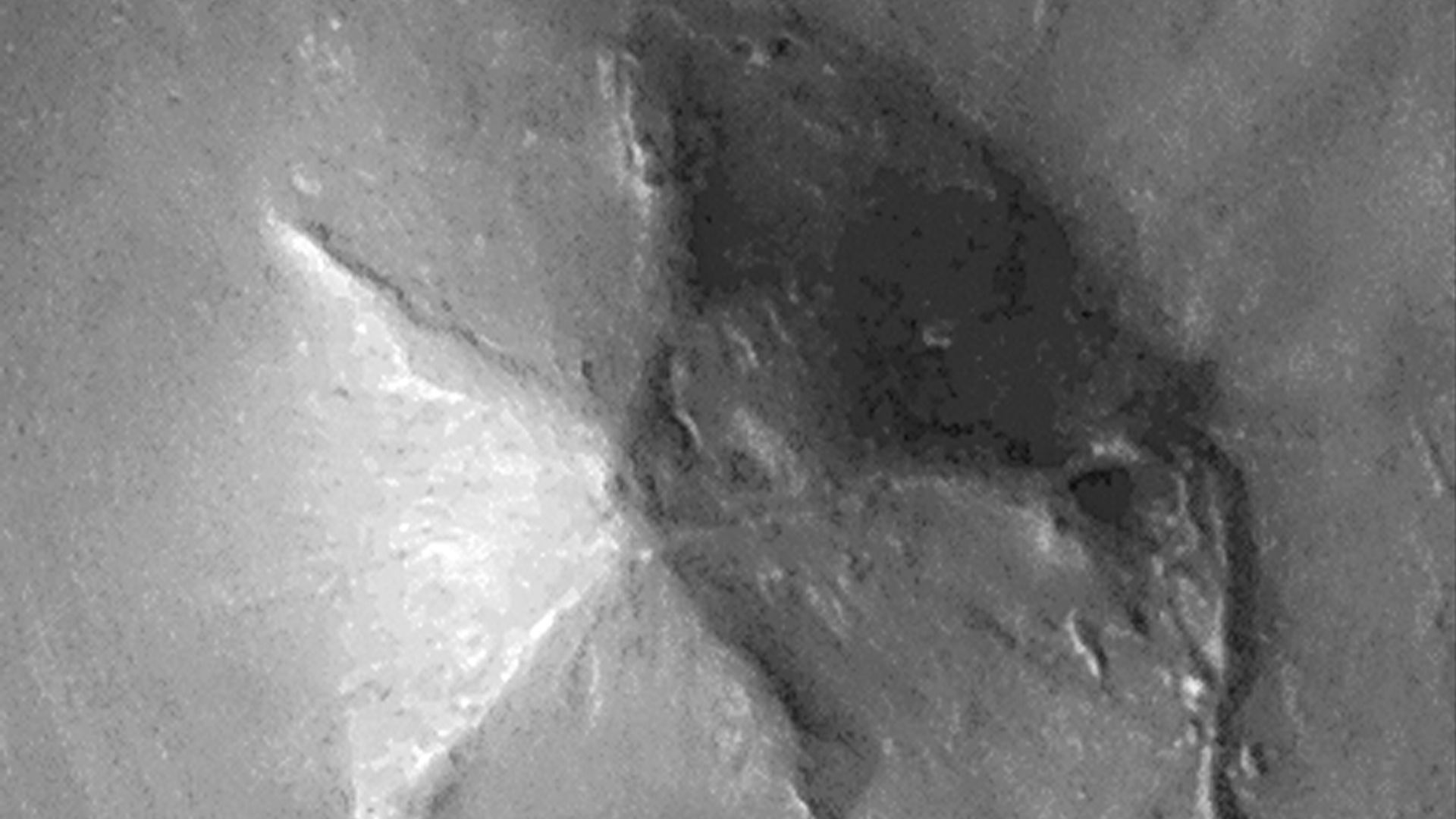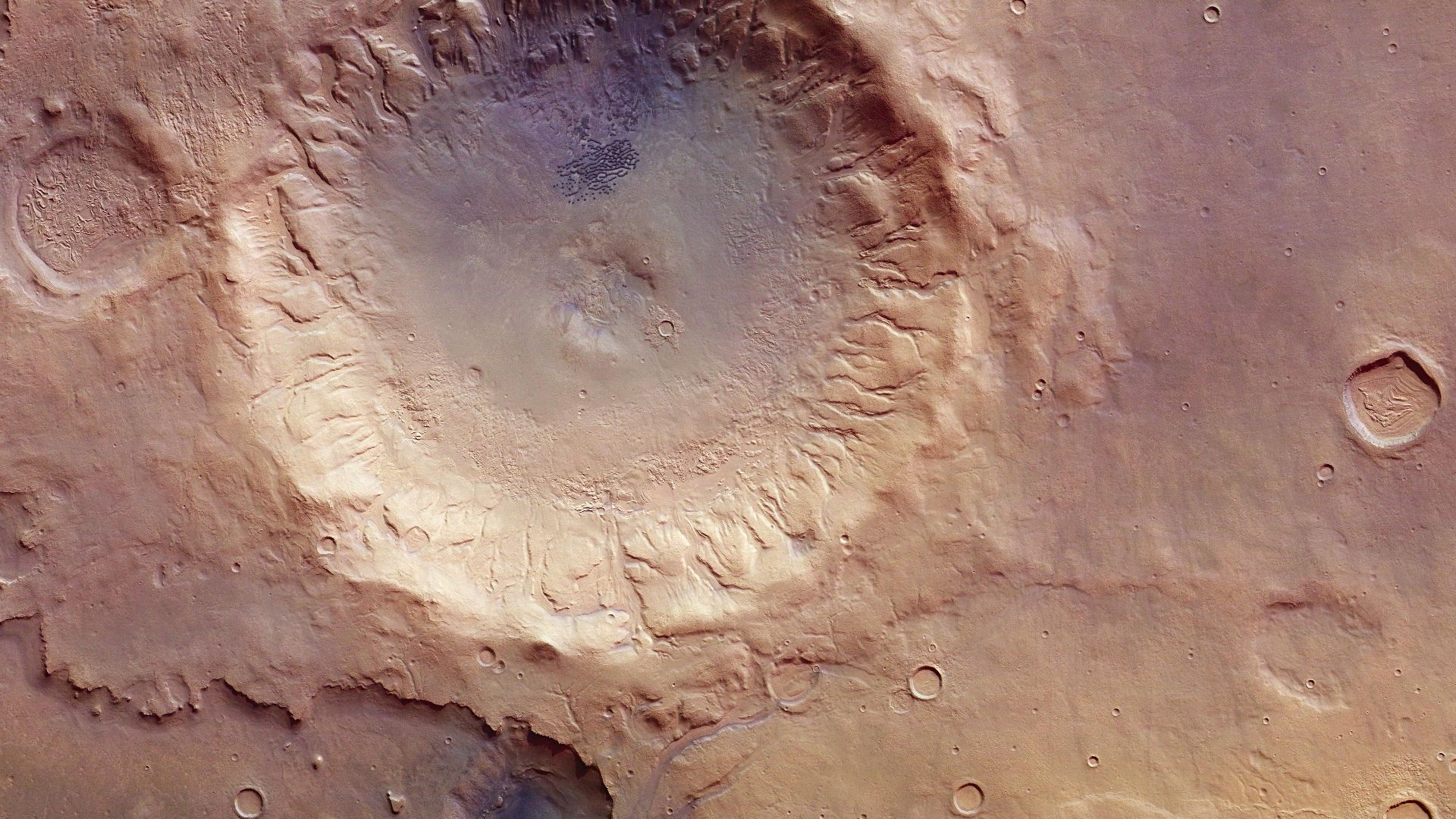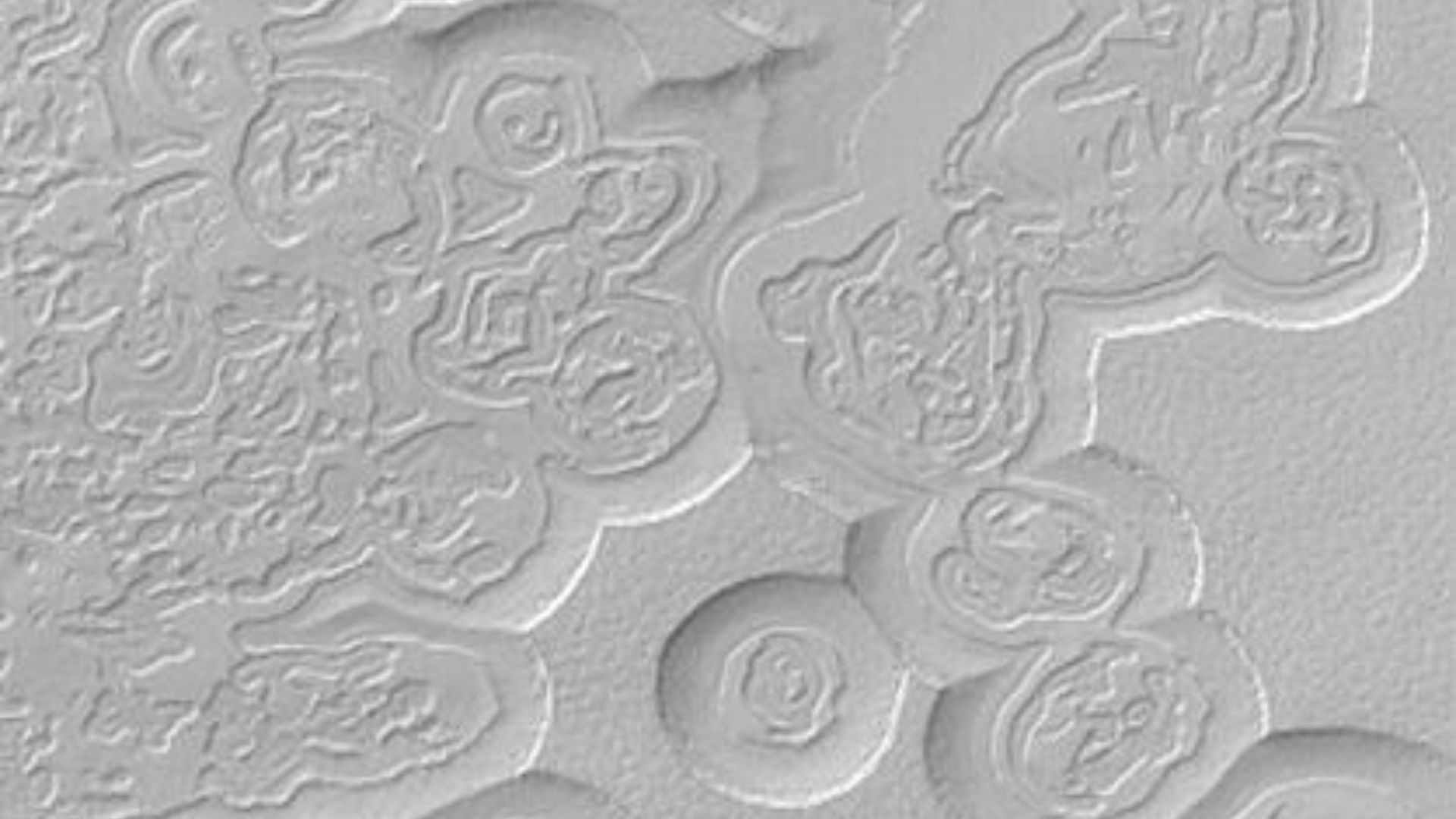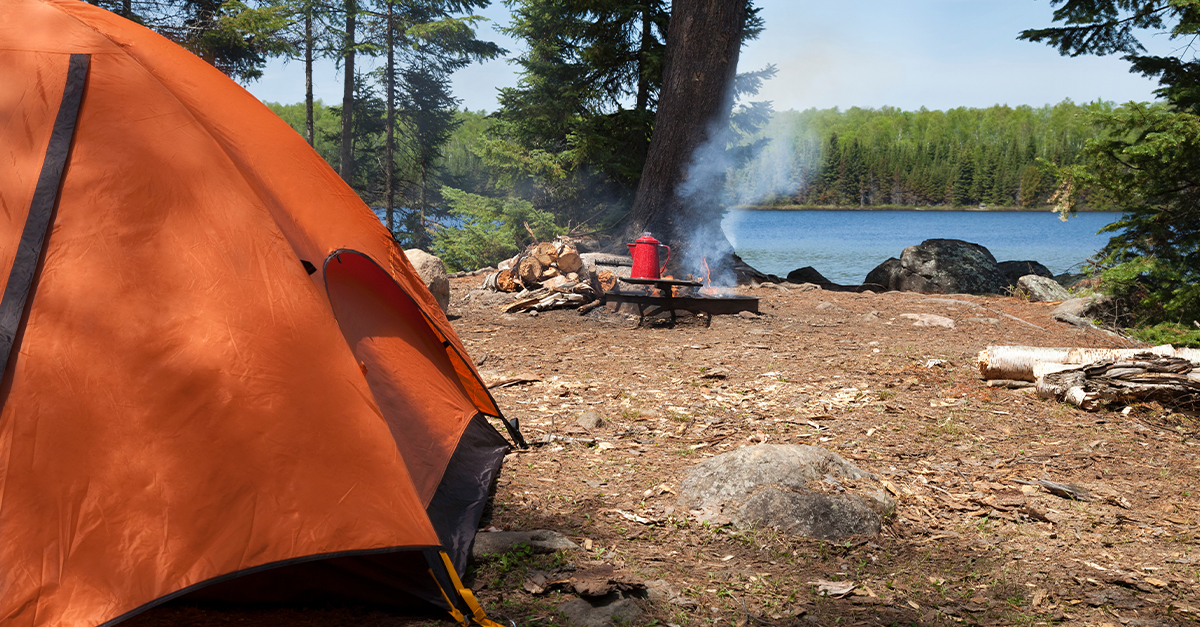Martian Mysteries Unfolding One By One
Mars has always been a planet of mystery, but some discoveries are so bizarre that they leave even top scientists scratching their heads. While some are just mere light tricks, others defy easy explanations. The first one being…

The Face On Mars
In 1976, NASA's Viking 1 orbiter captured an image of a mesa in Mars's Cydonia region that bore an uncanny resemblance to a human face. This "Face on Mars" sparked widespread speculation about extraterrestrial civilizations. Later, high-resolution images revealed it was a natural rock formation shaped by shadows and light.
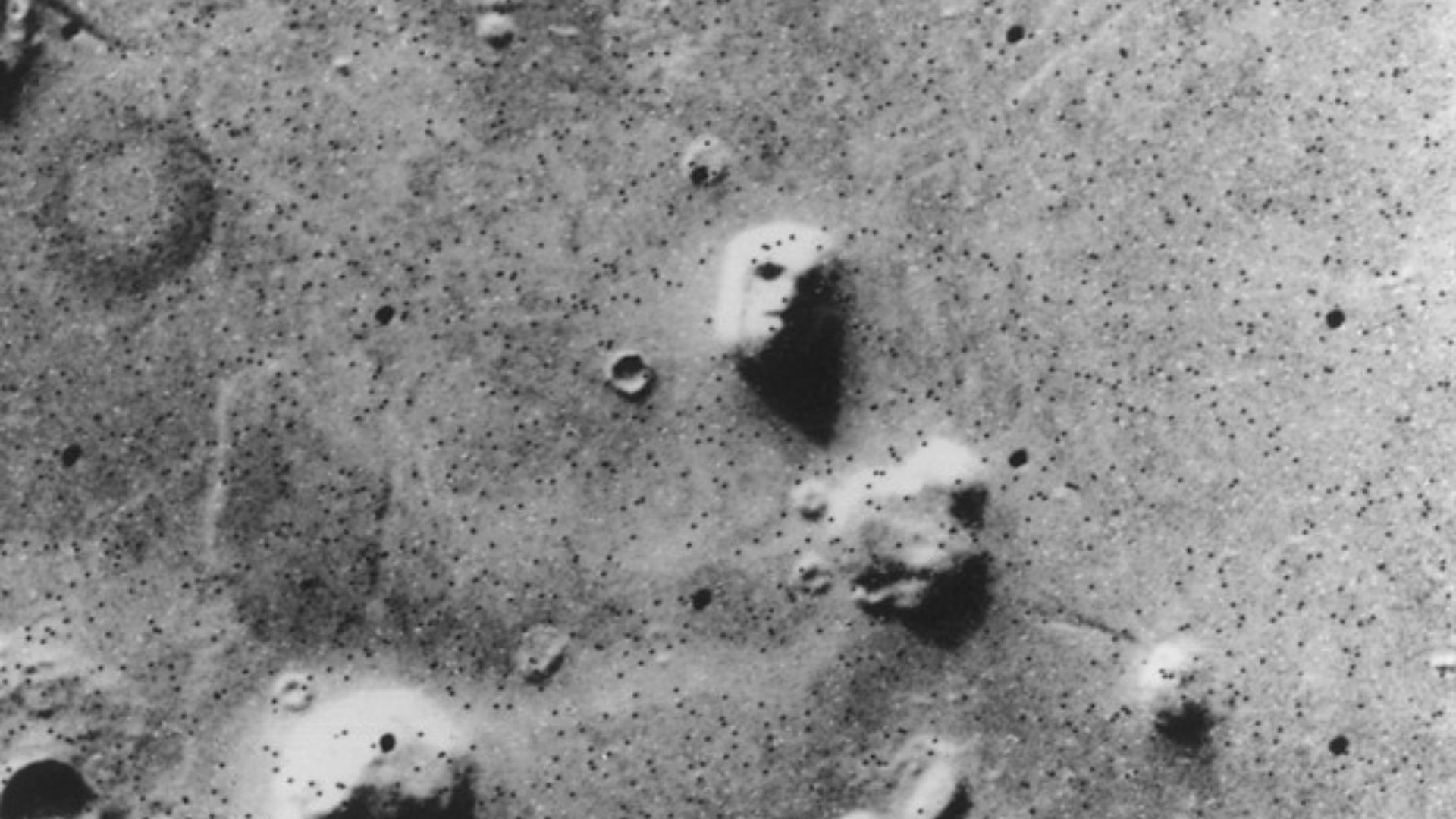 Viking 1, NASA, Wikimedia Commons
Viking 1, NASA, Wikimedia Commons
The D&M Pyramid
Adjacent to the "Face on Mars," the Cydonia region also hosts the "D&M Pyramid," a five-sided, pyramid-like structure. Its geometric appearance led to theories of artificial construction. However, scientists attribute its shape to natural geological processes like wind erosion and tectonic activity.
Mars Morse Code
Check this out—NASA’s HiRISE camera snapped a wild image of dark dunes on Mars that look like dots and dashes. It turns out that wind and an old crater teamed up to shape these bizarre patterns, and scientists are still figuring out exactly how. Is Mars hiding a message?
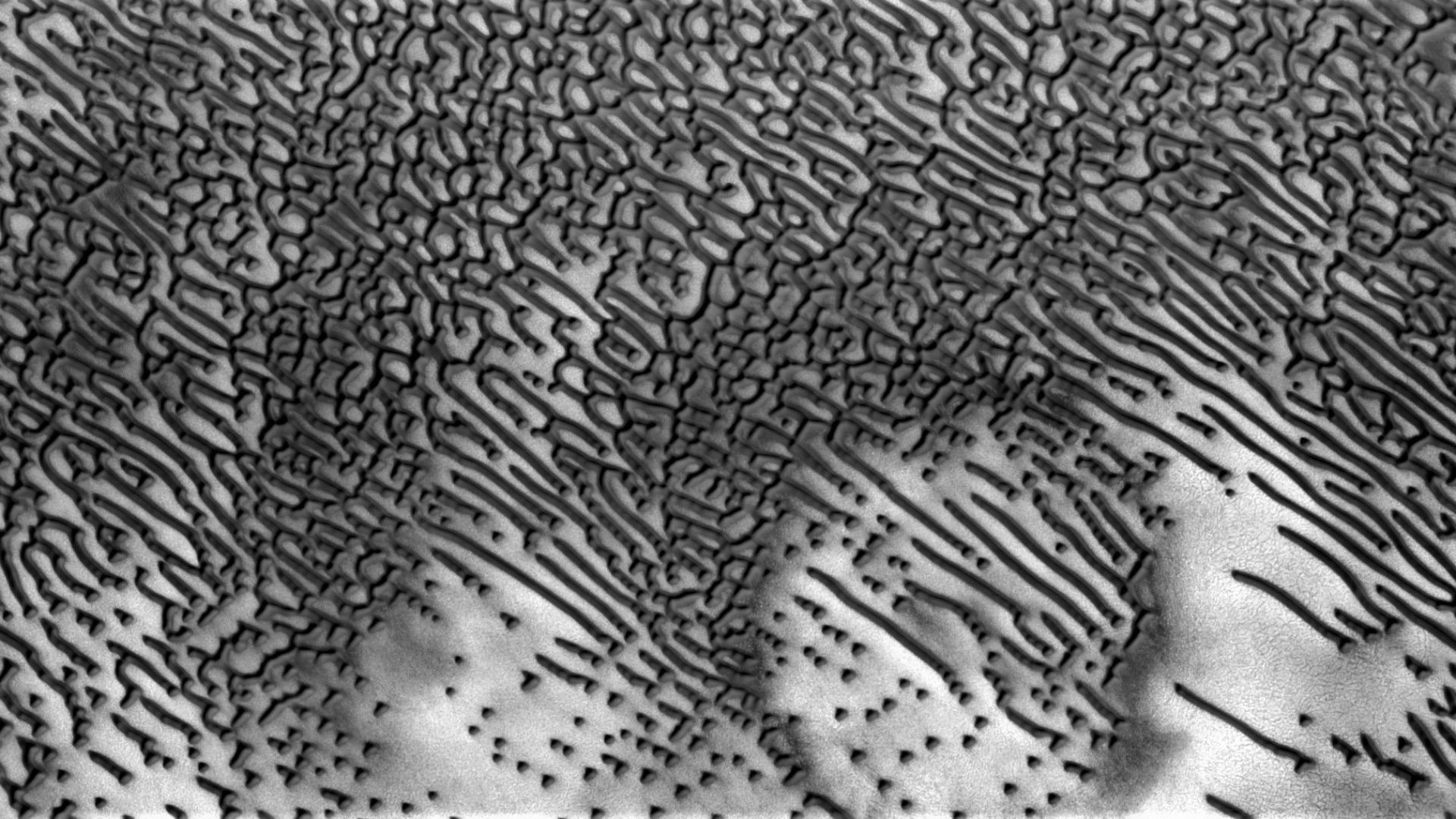 National Aeronautics and Space Administration
, Wikimedia Commons
National Aeronautics and Space Administration
, Wikimedia Commons
Jelly Doughnut Rock
One day in 2014, the Opportunity Rover rolled across the Martian surface and encountered something strange: a rock that hadn't been there before. The mystery? It was shaped like a jelly donut. As expected, the "Pinnacle Island" sparked debate until scientists realized the rover had unknowingly kicked it into view.
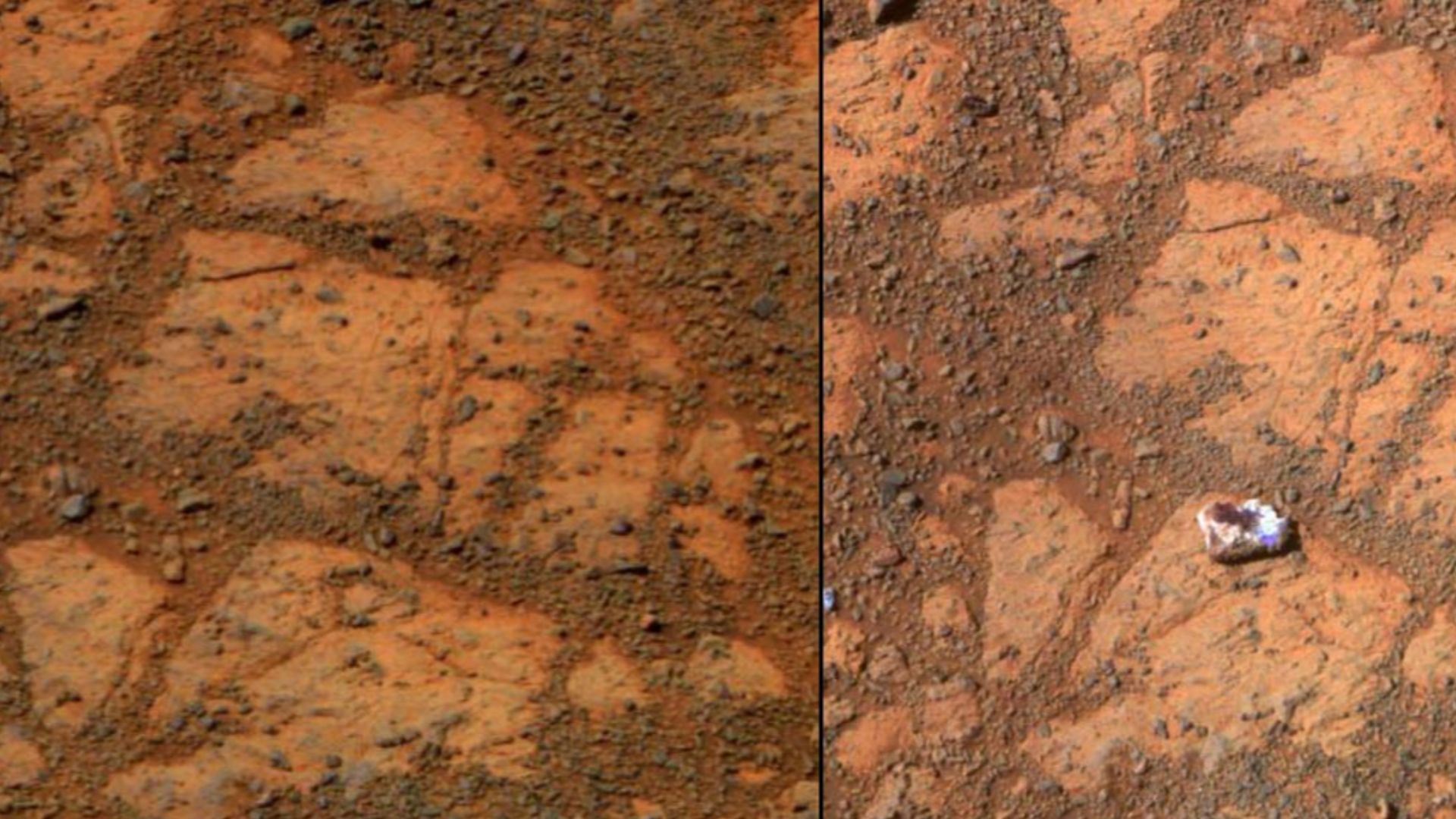 NASA/JPL-Caltech/Cornell Univ./Arizona State Univ., Wikimedia Commons
NASA/JPL-Caltech/Cornell Univ./Arizona State Univ., Wikimedia Commons
The Flowing Water Mystery
Dark, elongated streaks creep down Martian slopes like fingerprints left behind. First spotted in Hale Crater, these lines expand during warm months and vanish as temperatures drop. Initially hailed as evidence of liquid brine, later studies challenged the idea to suggest dry, shifting sands may be at work instead.
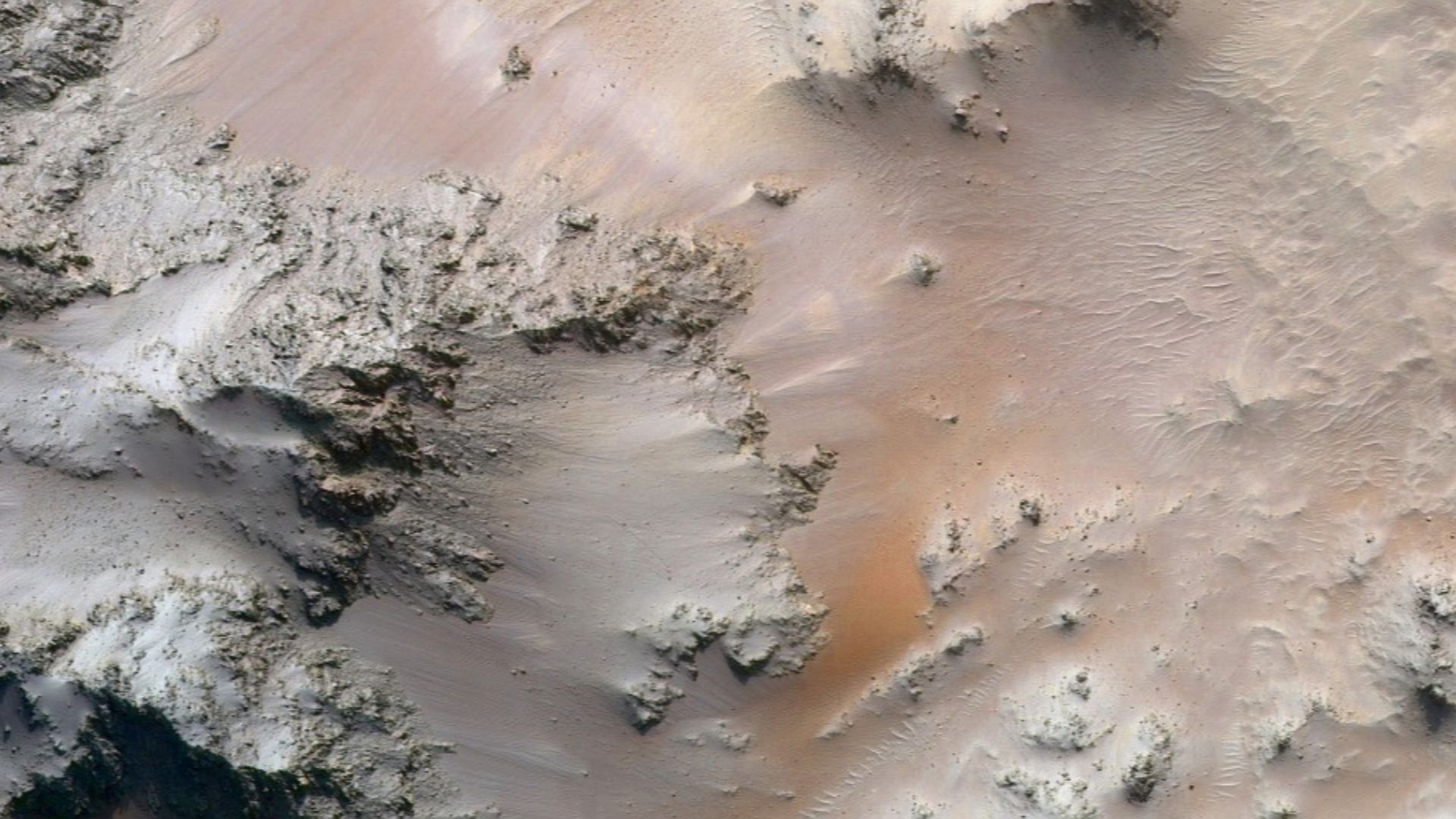 Mariagat Włodek Głażewski, Wikimedia Commons
Mariagat Włodek Głażewski, Wikimedia Commons
Methane Spikes
NASA’s Curiosity rover sniffed out something unexpected—methane spikes rising from Gale Crater. On Earth, methane screams life, often produced by microbial activity or decaying organic matter. Yet, Mars’s thin atmosphere should break it down rapidly, making its presence all the more baffling. Where is this gas coming from?
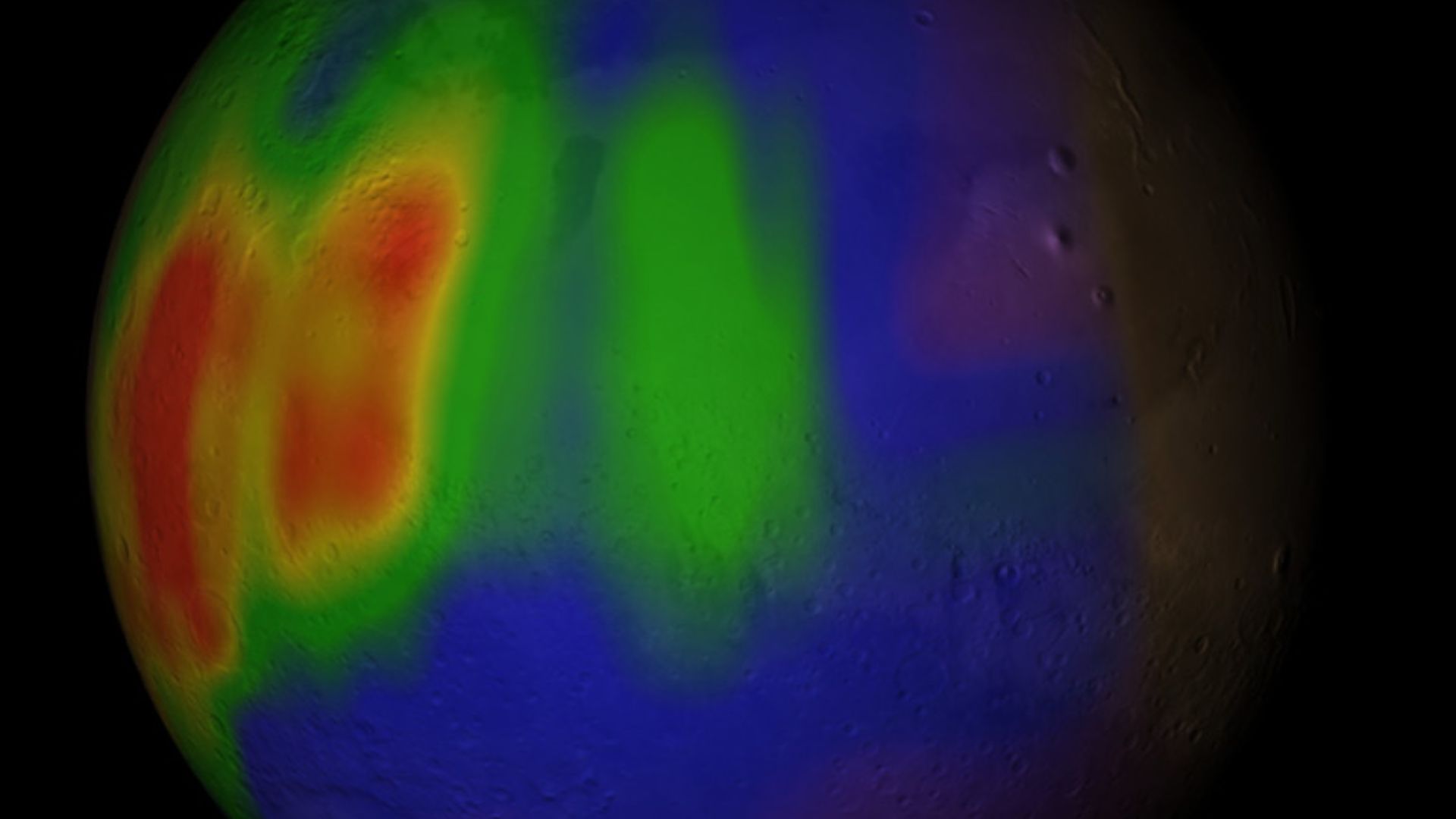 NASA/Trent Schindler, Wikimedia Commons
NASA/Trent Schindler, Wikimedia Commons
Martian Blueberries (Hematite Spherules)
Scattered across Meridiani Planum, thousands of tiny iron-rich spheres—nicknamed "blueberries"—sparked intrigue. Discovered by the Opportunity rover, these pea-sized orbs formed in ancient acidic waters, revealing Mars’s watery past. Their terrestrial cousins, known as "moqui marbles" in Utah, share a striking resemblance.
Subglacial Liquid Water Lakes
Buried 1.5 kilometers beneath Mars’s south polar ice, radar signals from the Mars Express orbiter hinted at something groundbreaking: a vast, briny lake stretching 20 kilometers across. If confirmed, this would be the first stable liquid water body on modern Mars, fueling hopes for microbial life hiding in extreme environments.
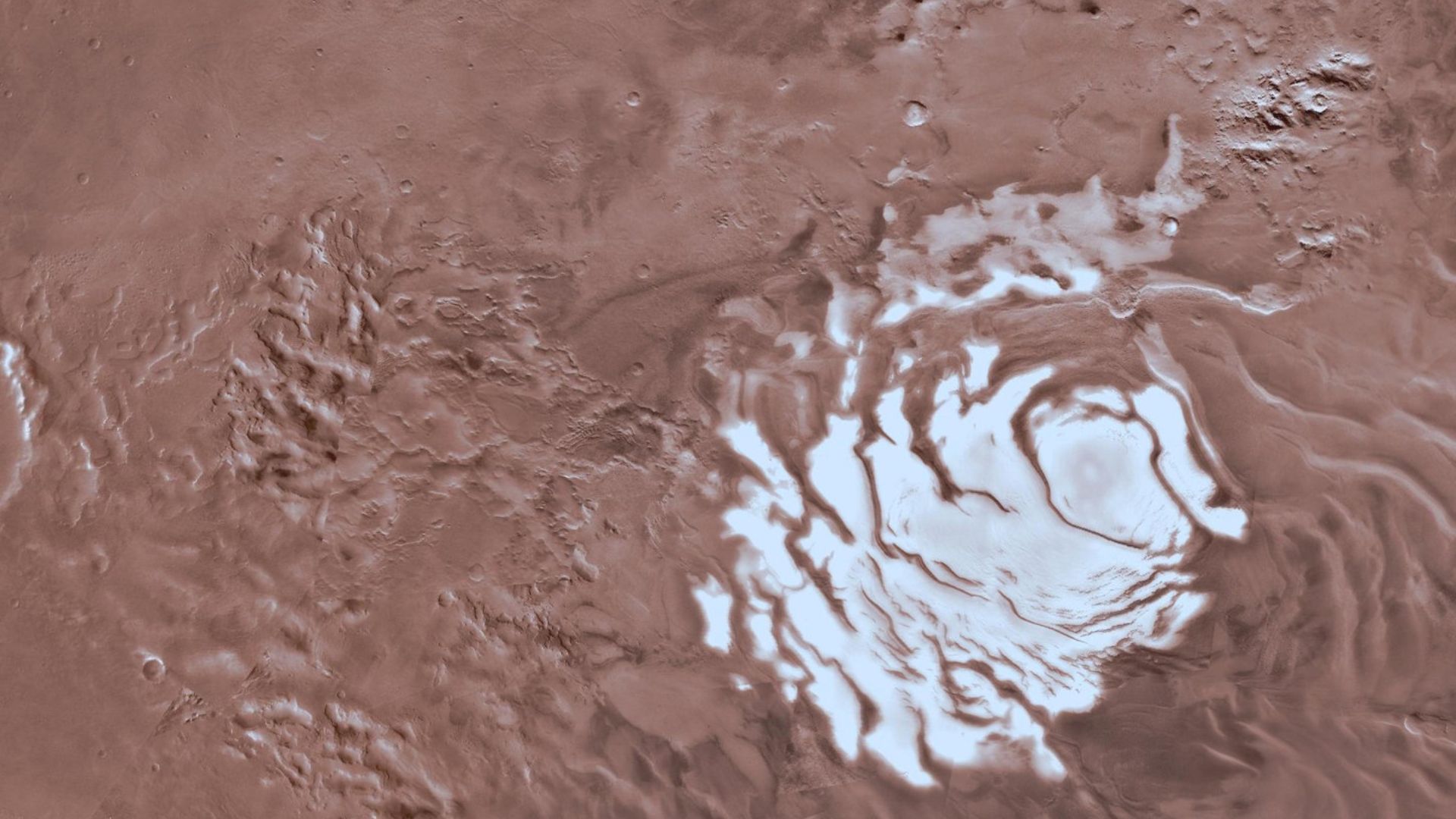 USGS Astrogeology Science Center, Arizona State University, INAF, Wikimedia Commons
USGS Astrogeology Science Center, Arizona State University, INAF, Wikimedia Commons
Ghost Dunes
Mars’s surface preserves ghostly remnants of an era long gone. For instance, crescent-shaped pits where mighty sand dunes once towered. These "ghost dunes," discovered in lava plains, are purported to have formed billions of years ago when Martian winds sculpted towering sand formations, only for volcanic activity to bury them.
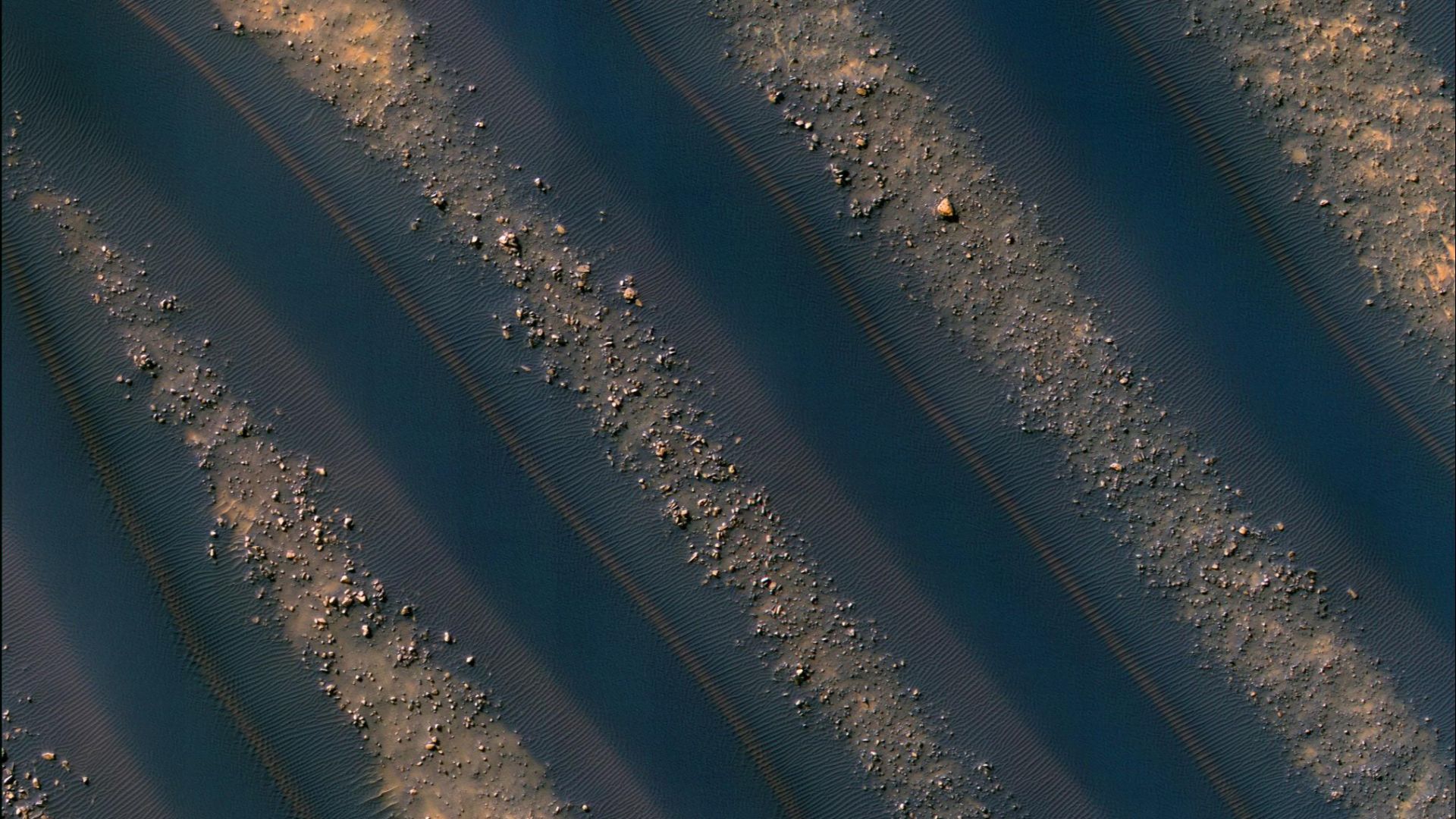 NASA/JPL-Caltech/University of Arizona, Wikimedia Commons
NASA/JPL-Caltech/University of Arizona, Wikimedia Commons
The Layered Rocks
“Studying these buttes up close has given us a better understanding of ancient sand dunes,” said Ashwin Vasavada. Captured by NASA’s Curiosity rover, these layered formations in the Murray Buttes region were shaped by wind, buried, altered by groundwater, and eroded over time, revealing Mars’s dynamic geologic history in detail.
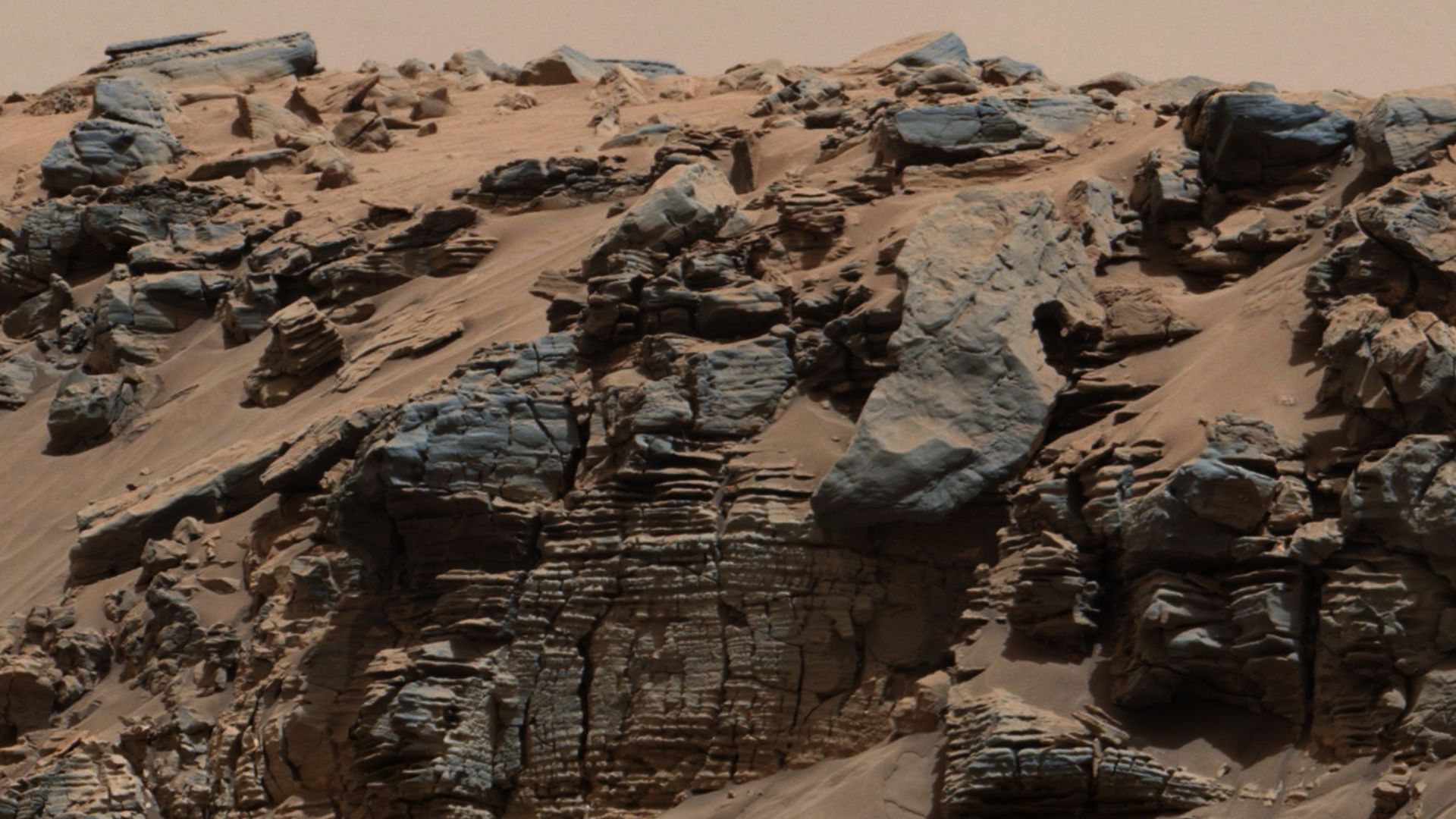 NASA/JPL-Caltech/MSSS, Wikimedia Commons
NASA/JPL-Caltech/MSSS, Wikimedia Commons
Mud Cracks With A Twist (Old Soaker Site)
Hexagonal cracks etched into Martian rock whisper tales of a planet once alive. This is another Curiosity find, but at the "Old Soaker" site. These mud cracks formed as the water evaporated and have since left behind telltale patterns that strongly resemble those found in dried lake beds on Earth.
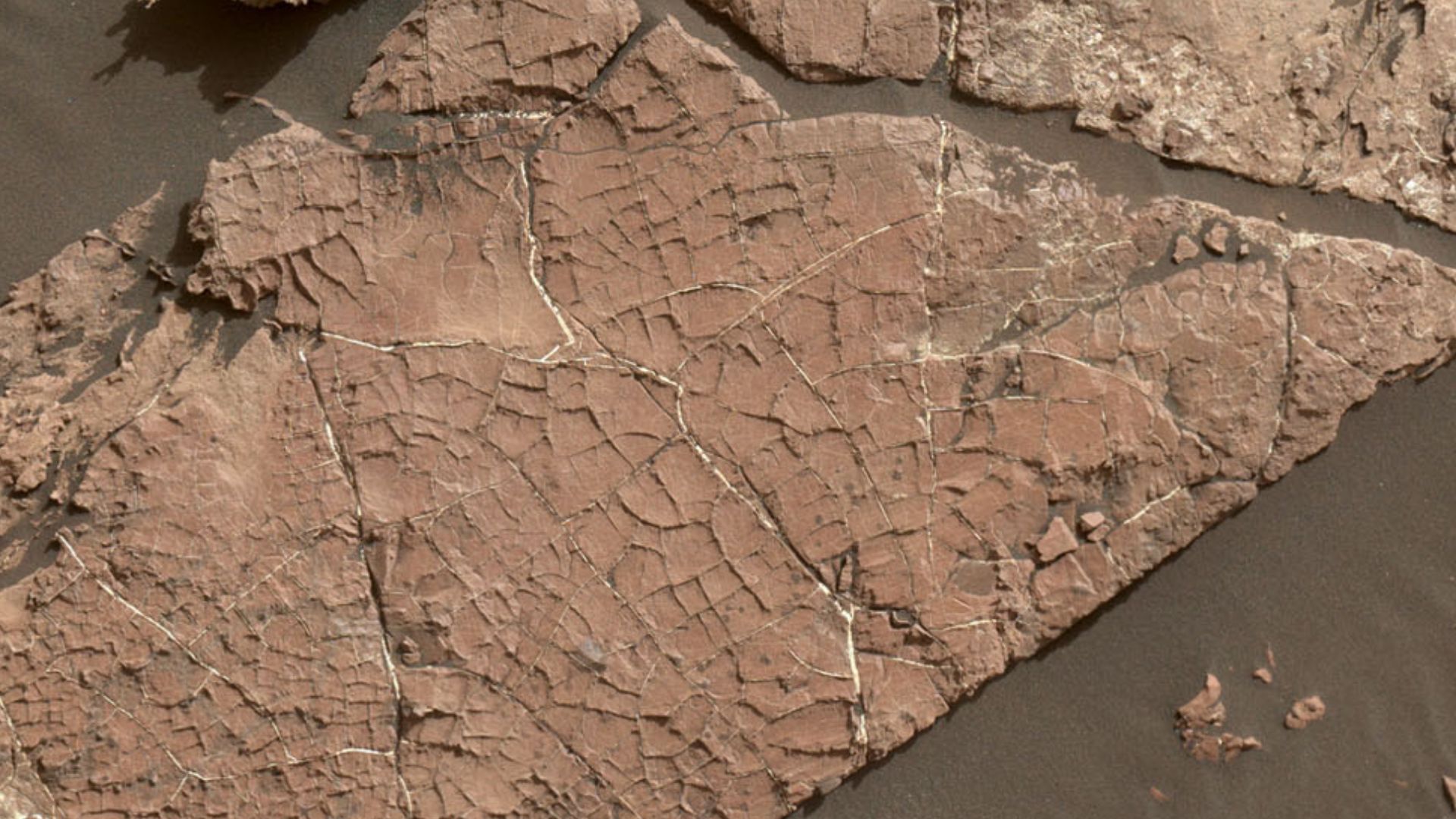 Jim Secosky selected NASA image. NASA/JPLJPL-Caltech/MSSS, Wikimedia Commons
Jim Secosky selected NASA image. NASA/JPLJPL-Caltech/MSSS, Wikimedia Commons
The Whistling Martian Wind
Howling across the barren Martian terrain, the wind carries an eerie tune—low booms and ghostly whistles recorded by NASA’s InSight lander. These sounds vibrate through thin air and alien dust and are the first direct acoustic signature of Mars. Never before had humans "heard" the Red Planet in this state.
The Mars Avalanches
A thunderous collapse of ice and dust, caught in action by the HiRISE camera, revealed Mars isn’t still. Towering cliffs shed their frozen skin every Martian spring as sublimating CO₂ gas weakens the surface, sending cascades of debris tumbling hundreds of feet down in a violent spectacle—in slow motion.
The Bouncing Boulder Tracks
A single, looping trail etched into Newton Crater’s surface puzzled scientists until they realized a boulder had left it behind. The rock, likely dislodged by a minor quake or meteorite impact, didn’t just roll downhill. Instead, it bounced and left a pattern of skips and pauses in the dust.
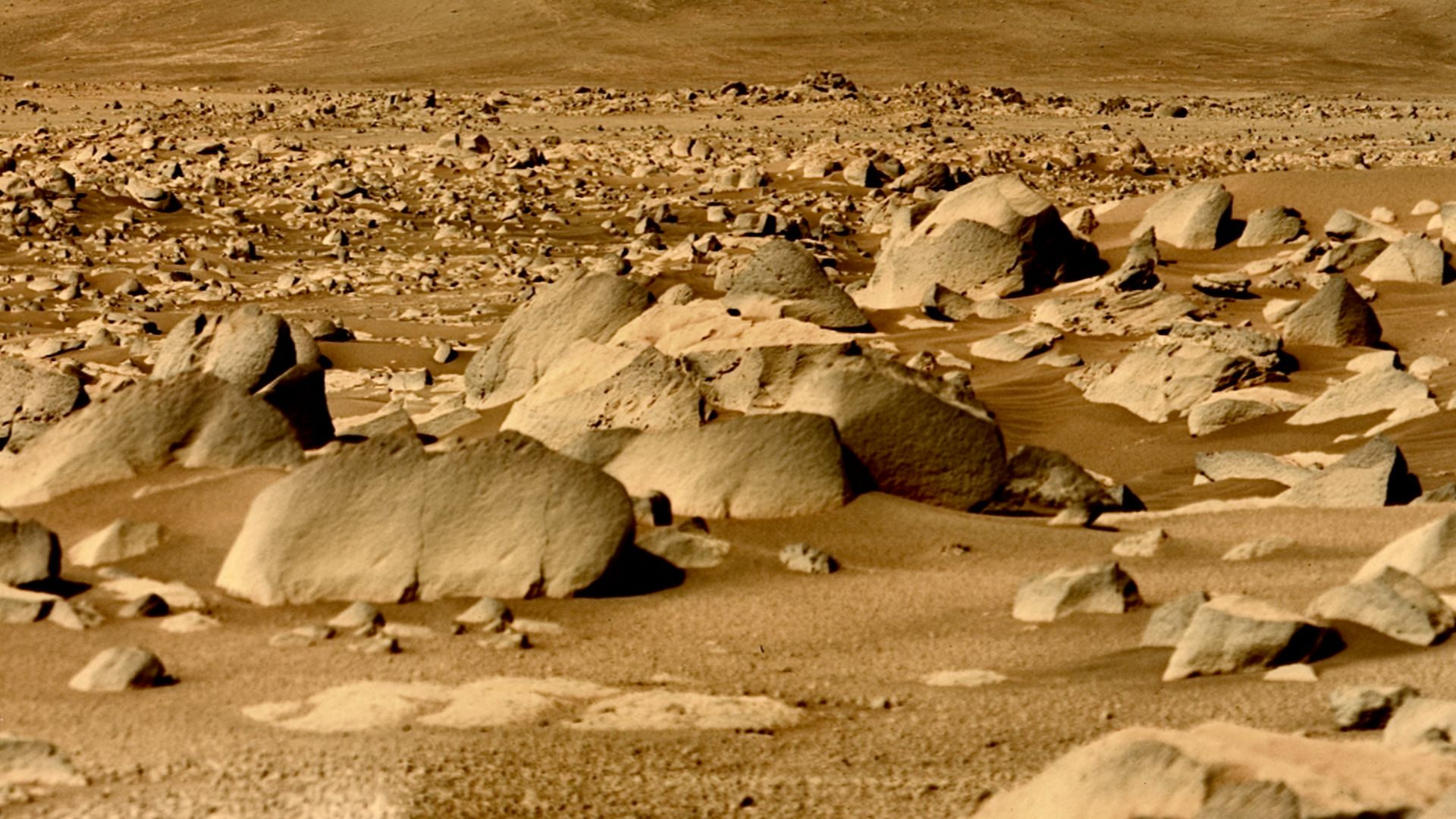 Raziel Abulafia, Wikimedia Commons
Raziel Abulafia, Wikimedia Commons
Martian Fairy Castles
In the heart of Gale Crater, Curiosity discovered bizarre, spire-like formations. They were fragile and seemingly sculpted by unseen hands. Their existence is surprising. Mars lacks the intense weathering forces that shape Earth’s hoodoos. Could ancient floods have once sculpted them before the planet dried up?
 NASA/JPL-Caltech/MSSS, Wikimedia Commons
NASA/JPL-Caltech/MSSS, Wikimedia Commons
The Disappearing Craters
On Earth, craters last eons, but not on Mars. Here, deep, fresh craters appear, but they are "heard" before they are seen or investigated. NASA’s rovers typically detect seismic events first, and when orbiters later scan the area, the brand-new impact site might be found. Mars’s surface is constantly changing.
 NASA, modified by Chmee2, Wikimedia Commons
NASA, modified by Chmee2, Wikimedia Commons
The Singing Sand Dunes
As sand grains shift and cascade down slopes, friction causes low-frequency vibrations, creating a ghostly song in the alien wind. The result? Mars has its own symphony. No direct recordings exist, but sensors have picked up the subtle ground movements.
 Kevin Gill from Los Angeles, CA, United States, Wikimedia Commons
Kevin Gill from Los Angeles, CA, United States, Wikimedia Commons
The Mars Worms
Winding across Martian rock like ancient tendrils, these strange ridges look ghostly organic. Unlike real worms, some resemble fossilized marine life—polychaetes, tube worms, and even crustaceans—embedded in Gale Crater’s dried lake beds. Statistical analysis suggests they weren’t shaped by mere erosion or crystallization.
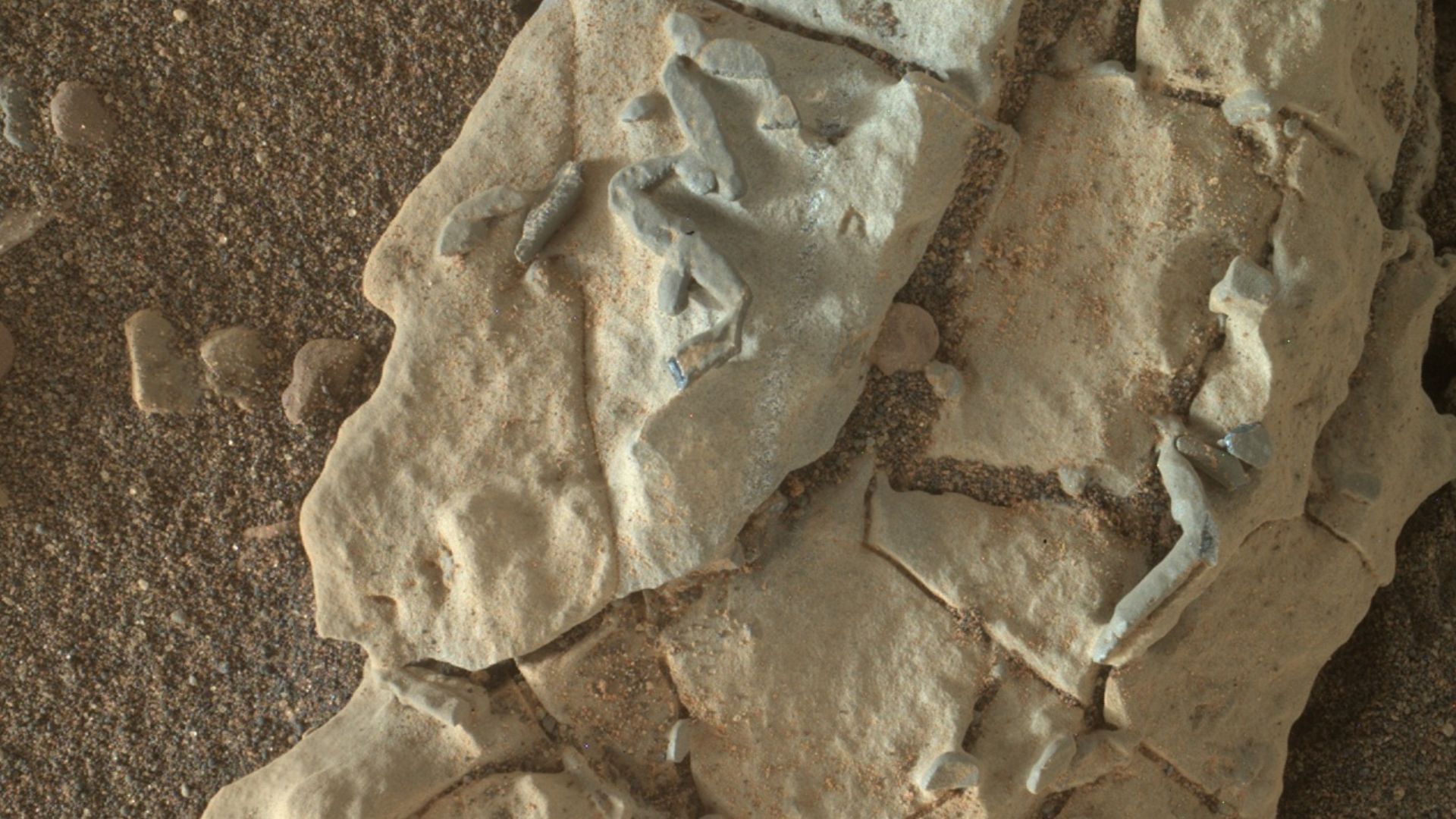 NASA/JPL-Caltech/MSSS, Wikimedia Commons
NASA/JPL-Caltech/MSSS, Wikimedia Commons
The Glinting Ice Patch
NASA’s Mars Reconnaissance Orbiter spotted something unexpected: bright, mirror-like patches inside fresh impact craters. Unlike typical dusty frost, this ice lay beneath the surface. “This ice is a relic of a more humid climate from perhaps just several thousand years ago,” said Shane Byrne from the University of Arizona.
The Oddly Shaped Crater
Most craters are usually circular. Not this one. This oddly oblong crater stands out in Noachis Terra, Mars’s southern hemisphere. Impact forces typically eject material in all directions, creating symmetrical shapes, yet this crater defies the norm. Scientists classify it as a simple crater, but its formation still puzzles them.
A Doorway
A doorway on Mars? Not quite. This image from NASA’s Curiosity rover, taken on May 7, 2022, sparked wild speculation—what’s a door doing on the Red Planet? The truth is far less mysterious. The rectangular opening is simply a trick of light, shadow, and natural geology in Gale Crater.
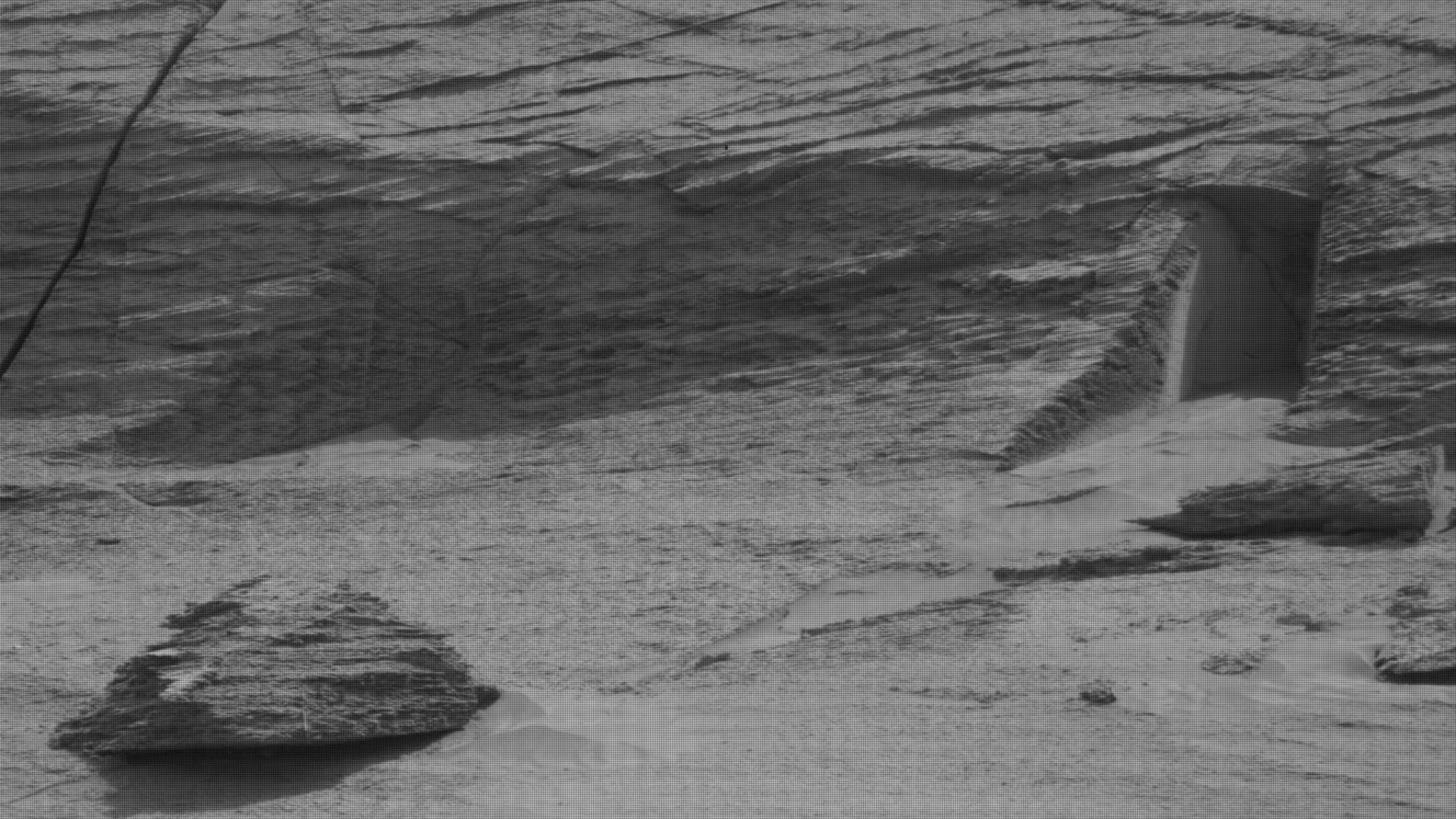 NASA/JPL-Caltech/MSSS, Wikimedia Commons
NASA/JPL-Caltech/MSSS, Wikimedia Commons
Ancient Martian Shoreline Discovered
In 2022, Curiosity imaged wave ripples in Gale Crater’s Amapari Marker Band with evidence of an ancient shoreline. Formed 3.7 billion years ago, these ripples suggest Mars had open, wind-blown water, contradicting theories of a frozen surface. This discovery hints at a once warmer, wetter Red Planet.
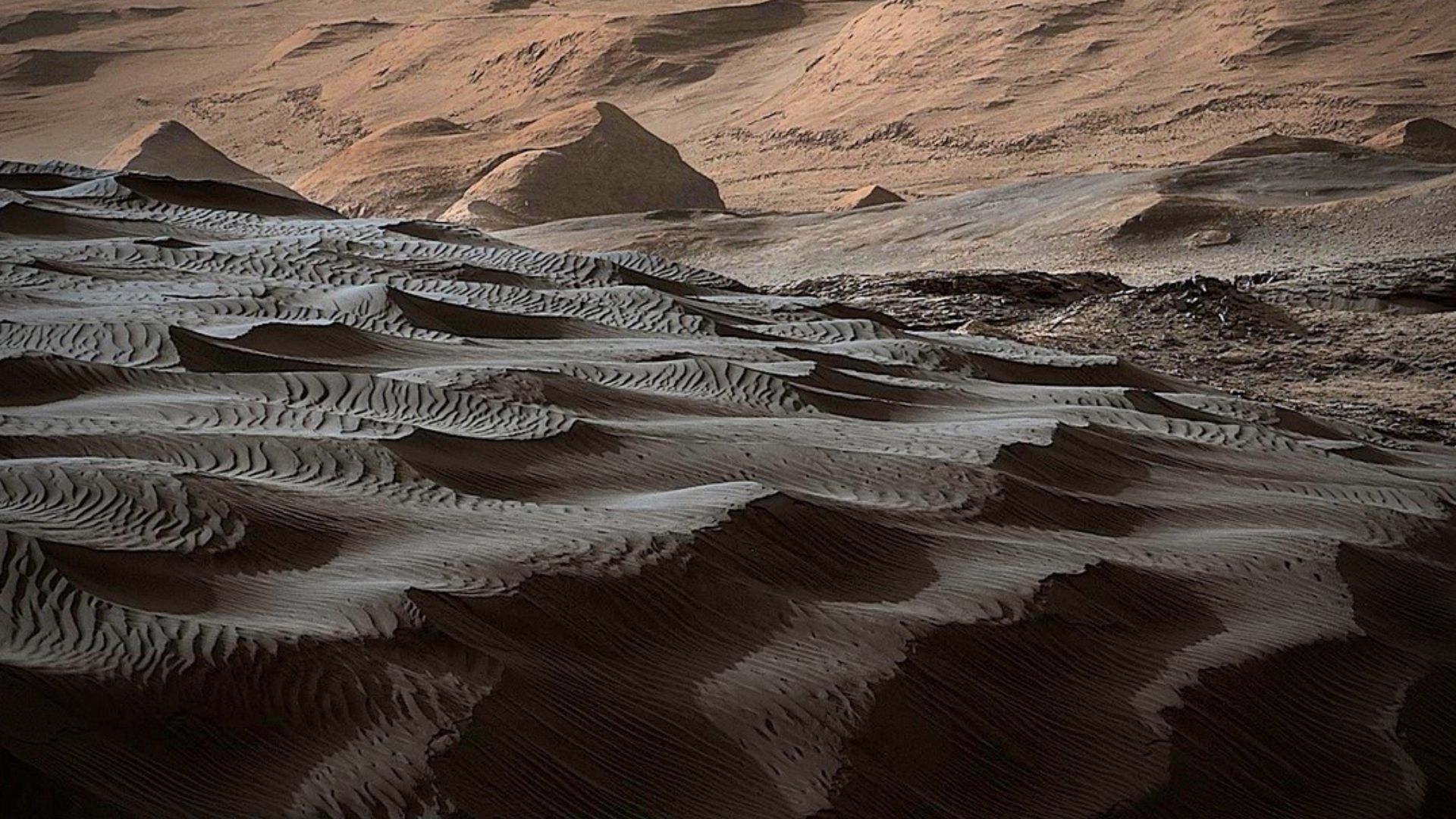 Peter D. Tillman, my crop and a bit of reprocessing, Wikimedia Commons
Peter D. Tillman, my crop and a bit of reprocessing, Wikimedia Commons
The Femur Bone
Curiosity’s MastCam caught a rock shaped like a femur bone. As expected, it sparked wild theories. NASA quickly debunked the hype with the explanation that wind or water erosion likely sculpted it. Scientists believe Mars never had enough oxygen for large life forms, so this "fossil" is just another trick.
 NASA/JPL-Caltech/MSSS, Wikimedia Commons
NASA/JPL-Caltech/MSSS, Wikimedia Commons
The Honeycomb Terrain
A massive honeycomb-shaped pattern lies beneath Mars’s equator, strikingly similar to formations found near Earth’s poles. Each crevasse stretches 230 feet across and is bordered by ice and mud. Discovered in 2023, this unusual detail hints at past climate activity and possibly hidden water reservoirs beneath the Red Planet’s surface.
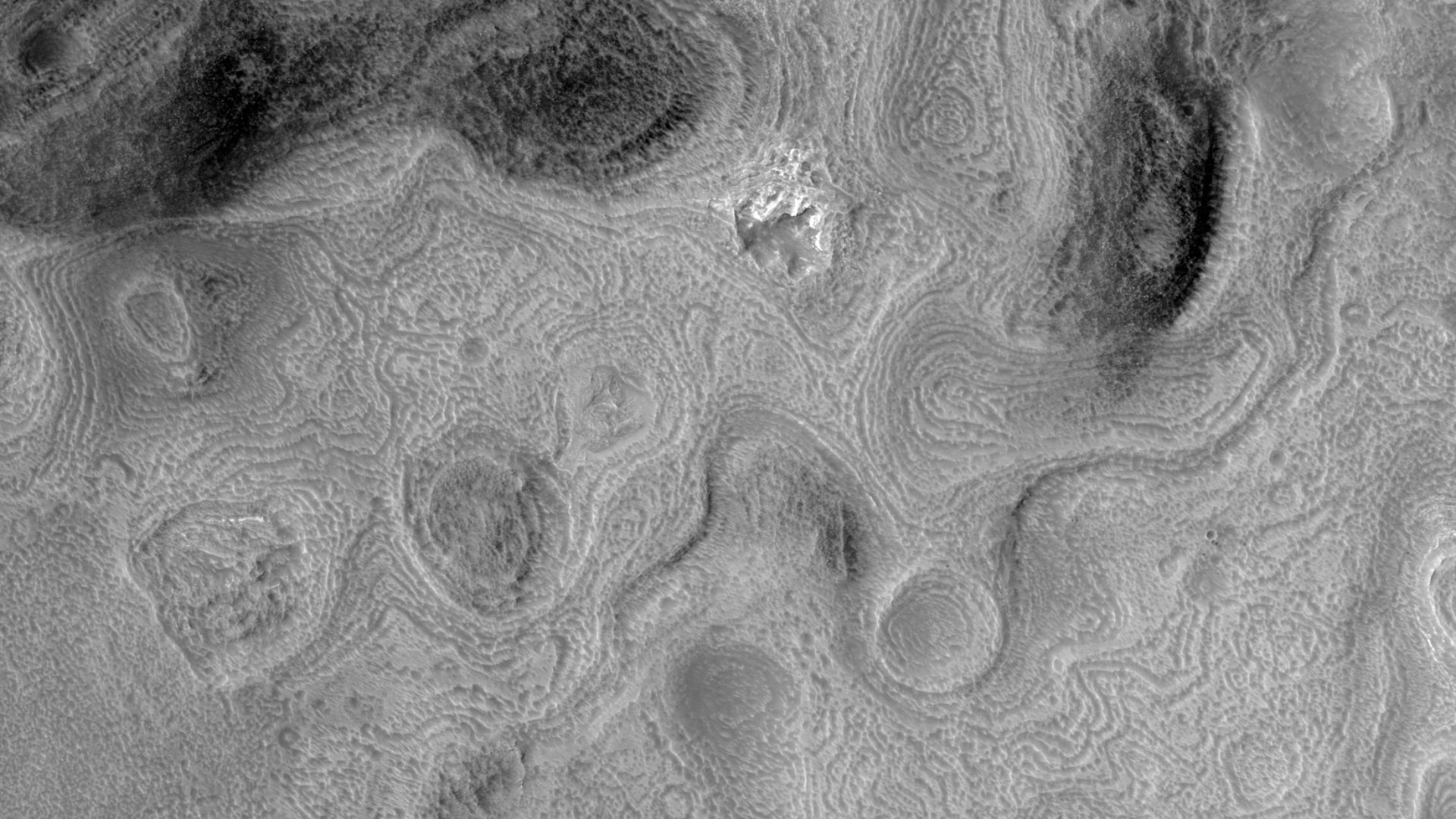 Jim Secosky modified NASA image. NASA/JPL/University of Arizona, Wikimedia Commons
Jim Secosky modified NASA image. NASA/JPL/University of Arizona, Wikimedia Commons
Mars’s Swiss Cheese Ice
Mars’s south polar cap looks like Swiss cheese, thanks to pits carved by sunlight heating carbon dioxide ice. As some areas sublimate into gas, fresh frost forms elsewhere, keeping the cycle going. The result? An ever-morphing scenery that shifts over time, perfect for a cosmic game of spotting the difference.


